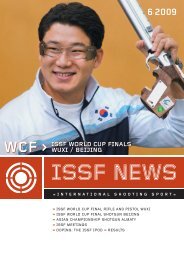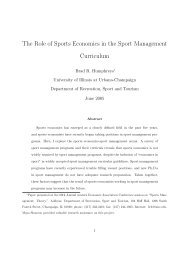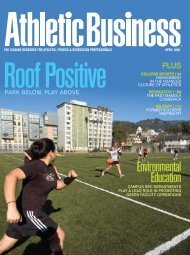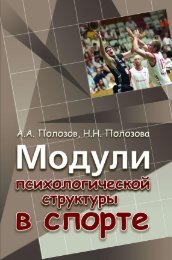You also want an ePaper? Increase the reach of your titles
YUMPU automatically turns print PDFs into web optimized ePapers that Google loves.
Physiological Responses Of<br />
Children To Exercise Series (3)<br />
Children’s Children’s Neuromuscular Skeletal Skeletal System System<br />
and and their their perception perception of of exercise exercise<br />
Neuromuscular skeletal<br />
system of children<br />
A child has an immature<br />
body structure; i.e. the<br />
bones are still growing<br />
and the muscles are still<br />
developing up until<br />
adulthood. With a child’s<br />
body there are three main<br />
areas of concern; namely<br />
musculature, bones<br />
structure, flexibility and<br />
mechanical efficiency.<br />
Musculature<br />
Simply put, in<br />
comparison, a child is not<br />
as strong as an adult is,<br />
therefore the instructor<br />
must take care to choose<br />
specific types of<br />
exercises that will not<br />
overload their bodies.<br />
What instructors need to<br />
realize is that in the instance of resistance<br />
training (moving an external weight of<br />
sorts), a child will attempt almost anything<br />
asked. The thought of “too heavy” is<br />
disregarded, especially with boys. Even<br />
By Tristan Vardy (B. Hons. Sport Science)<br />
Part 3<br />
In this instalment by Sabum-nim Tristian Vardy, looks at two important<br />
aspects that parents and instructors should keep in mind. The first is<br />
the neuromuscular skeletal system of children, and the second is<br />
children’s perception of exercise. Depending on how these aspects are<br />
approached, they could have a lifelong impact on the person.<br />
though children are resilient, they can still<br />
overtax their bodies and get injured.<br />
Bone structure<br />
The bones of a child are<br />
still in the process of<br />
growing. The ends of the<br />
bones (epiphysial plate)<br />
are the sections that<br />
lengthen the body. If<br />
forces are applied that are<br />
too great in an isolated<br />
incidence, acute damage<br />
to the epiphysial plate is<br />
likely, resulting in required<br />
orthopaedic surgery.<br />
Similarly, if too great<br />
forces are habitually<br />
applied to the skeleton (in<br />
the form of resistance)<br />
this will result in<br />
premature and irreversible<br />
closing of the epiphysial<br />
plates resulting in stunted<br />
growth 4 .<br />
It is very difficult to determine what force is<br />
‘too much’, however a child should always<br />
be encouraged to participate in activities<br />
resulting in integration of motor unit skills<br />
and working across the median line (such<br />
<strong>Totally</strong> <strong>Tae</strong> <strong>Kwon</strong> <strong>Do</strong> - 55

















